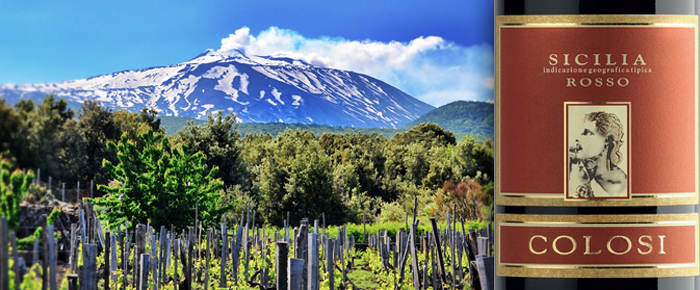
By Rick Riozza
So I see a telephone call coming in from my Mom on a late Sunday evening. Sure we talk often, but always during the day. I never get a call from her that late—on a Sunday to boot. I wince and sort of brace myself for maybe some not-so-good news.
I answer the phone. “Hi Mom!—everything all right?!”
“RICKY!—what are you watching on TV?”
What am I watching on TV?? Now I’m certain there’s some 32 letter German word out there that means feeling both relieved and unnerved at the same time over hearing some news. “I’m watching 60 Minutes and some recorded stuff—why?”
Her voice has an accusatory tone. “How come you’re not watching PBS!”
“PBS!!” Geez—(since when is she watching PBS!) “Why—what’s going on!”
“It’s a series on the immigrant Italian-Americans. They just mentioned our grandfather coming over from Sicily in the late 1800s!”
I’m making faces. “They mentioned him personally!?
“Well they mentioned a few last names of families coming over and ours was one of them!”
Okay—I got it. “Hey Mom! That is cool! Sorry to miss it. I’ll go on-line and catch the program!” I could hear it in her voice that she was especially proud that night of her heritage and our family—which included veterans of both wars.
So to linger in the spirit of sustaining my Mom cheeriness, I hope you will join us as we introduce and assess the scintillating wines of Sicily.
But of course, before we ever talk wine we must comment about the sacred flavors of the ancient island Sicilia. Owning a true Mediterranean cuisine with influences from about every culture around, from an array of meat dishes brought down by red-headed Normans back in the day, to the citrus, spices, herbs introduced by Arabs during their dynasty. Add Spanish, French, Greek and more to the mix—everything savors sublime grown on the volcanic soil.
And the fish. Ask any world renowned chef about the seafood of Sicily and you’ll hear them emote and sing praises of the best dishes they’ve ever had. You can see Naples and die; or, you can dine on Sicilian Grilled Swordfish and live well.
So becoming an expert—or at least a fan of Sicilian wine is fast, fun, and easy. The red wine from the south of the island is the Nero D’Avola [NEH-roh DAH-voh-lah]. It’s dry, medium-bodied and a fairly tannic wine that we can drink young with anything from spaghetti and meat balls to roast lamb. And it’s got great aging potential if you can leave it alone.
The Nero D’Avola is a smart break from California reds when you wish to drink something entirely different. It’s fruity with notes of blackberries, black cherries, dried fruits, plums, raspberries, and spices. Subtle notes of black pepper, chocolate earth, flowers, tar, tobacco, and violets can also play out.
By the way, it is traditionally the blending grape for the famed Marsala wine. Veal anyone?
The red wine from the north is from the Nerello Mascalese [neh-REHL-loh MAHS-kah-LEH-zeh] grape grown on the slopes of the volcano Mount Etna. The wine is like a fortuitous mix of Pinot Noir and Nebbiolo. It offers bright red fruit, with an herb and spice character. But its tannins are more akin to those of Barolo. This is a must on the radar for any red wine fan.
The perfect entry level wine that showcases both the Nero D’Avola and the Nerello is the Cantine Colosi Rosso Sicilia IGT at around $9. The color is an intense dark ruby red with a bouquet of black fruit, blackberry, flowers, and herbs. Great with red meats and aged cheeses.
As to Sicilian white wine, you’ll often find blends of these four grapes: Carricante, Catarratto, Grillo, and Inzolia.
The Grillo [GREEL-loh] is dry and full-bodied but an easy quaffer that is fresh, crisp, fruity and aromatic with notes of almonds, apples, citrus, flowers, green peppers, lemon, minerals, peaches, sea breeze, spices and vanilla. That’s a lot of stuff for a nifty white wine. It’s a great alternative to the usual Pinot Grigio.
As to pairings, think antipasti, cheese (esp. young), chicken, pasta, pork, seafood, and vegetables.
A very pleasant entry level Grillo is the popular 2013 Feudo Arancio Grillo Sicilia IGT at around $8. The PR on this wine reads: “This native Sicilian is a real all-rounder, and goes great with a range of foods from poached chicken to soft cheeses. It’s a soft, rich style of white that shows tropical fruit salad smells mingling with savory notes of toast and roasted nuts.
You could pay the big bucks and grab the 2011 Marco de Bartoli Grillo Sicilia Grappoli for around $40. Check out the tasting notes on this one: “Bright and harmonious, with a backbone of tangy acidity and a saline-tinged note of raw almond underscoring the flavors of white cherry, green plum fruit, ground spice , and pickled ginger. The salted almond accent echoes on the lasting finish.”
I think you’re getting the idea of the Grillo wine.
Amuri is a uniquely Sicilian word for love, a sentiment that underlies all aspects of the Sicilian culture, landscape, cuisine, and people. Here’s to food, wine, and love! Salute!








































